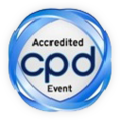
Guilherme Santos
Universidade de Brasilia, Brazil
Title: Exogenous nucleosome binding molecules: A potential new class of therapeutic drugs
Biography
Biography: Guilherme Santos
Abstract
Chromatin is as an extraordinary example of molecular recognition that defines gene expression and genome integrity. Although the essential facts about the nucleosome were already revealed 17 years ago, new insights into its atomic structure and molecular mechanisms are still emerging. In this talk, I will feature the nucleosome surface as a drug target to control chromatin dynamics and phenotypic changes. I will cover the key aspects of chromatin architecture upon binding of protein and exogenous molecules (exogenous Nucleosome Binding Molecules - eNBMs) to the nucleosome. Moreover, I will discuss the impact and development of eNBMs, presenting some of our results in silico, in vitro and in cell-based assays. The particular scientific interest of my group is the basic mechanism of how the structure of chromatin regulates gene transcription. Hence, I will feature the nucleosome surface as a drug target to control chromatindynamics and, consequently, gene expression and genome maintenance. Mainly, we try to understand the impact of Nucleosome Binding Molecules on chromatin architecture and in this conference, I will cover the key aspects of chromatin architecture upon binding of exogenous molecules (exogenous Nucleosome Binding Molecules - eNBMs) to the nucleosome. Moreover, I will discuss the impact and development of eNBMs, presenting some of our results in silico, in vitro and in cell-based assays. Certainly the Gordon Conference focused on Chromatin Structure and Function will be a unique opportunity to discuss our recent findings and establish future collaborations with the greatest scientists in the chromatin field. More importantly, we expect to learn a big deal about the future directions in the chromatin field.

